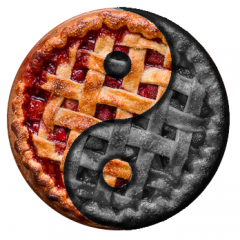Repairing Samsung Fridges, Simplicity to Supremacy Pt 1
I hope this helps you kick some Samsung Fridge Bootay!
On a Samsung repair, the First thing you do is talk with the customer about the problem. DO NOT open or let customer open the doors or unplug the fridge. "Ma'am, don't touch the fridge. Only the facts, please."
The second thing you MUST do with Samsungs is "talk to the fridge." Again do not open any doors, do not permit customer to open any doors instead check the display for error codes then run error code diagnostics (using diagnostics or unplugging fridge erases stored error codes so check the display first then initiate diagnostics., Some errors take a while to report so look closely first otherwise you may miss a code that takes 4 hours to reveal itself). If any sensor error code comes up, simply replace that sensor. A sensor error code means the fridge cannot communicate with the sensor and this can result in a locked down fridge.
But just because you don't see a sensor error code does not mean your sensors are good. In fact, if you don't see an error code at all but you have cooling problems, it typically means a sensor is communicating but it is sending wrong information.
Boards do not consider these "out of spec" sensors as errors...the fridge thinks maybe you put a hot bowl of molten lava or ten bags of dry ice in the fridge. For all it knows, you may be a mad scientist or something. So it will not consider these crazy temps an error but the system responds accordingly by cooling too much or not cooling at all. It's simply doing its job. (update.. 2013 and newer models will show an error if the thermistor reports over 149f or below -50f)
Next step is to put the fridge in a forced cooling mode... your compressor and fans should now be running. Don't forget the fans will not run unless the doors are closed.
Use strong magnets to simulate s closed door. You know you have the magnets in the right locations if the light goes out. Take note of any non running fan motor or compressor.
After checking diagnostics and entering forced cooling mode, take a quick and I mean very quick laser therm reading of fridge compartments and record your findings. However DO NOT OPEN ICE ROOM DOOR if the fridge has one, especially if you are there to repair an icemaker issue.
Next step, Main board diagnostics. Let any initial diagnostic test or fan/compressor operation guide you but generally test ALL... yup ALL thermistors at the board first. You are checking dc voltages so keep the fridge on and do not remove the sensor connector at the board. Back probe the connector using thin meter probes. RECORD YOUR FINDINGS. Oh, so you are getting an open reading, huh? Well duh, turn the the meter dial from ohms to DC and voila! Don't ask me why I made a point of mentioning this.
Compare your findings with the sensor temp chart in the fast track and with your intial temp readings. If something seems off, make plans to replace that thermistor and you more than likely have solved the problem.
If all sensors test fine but you have compartments that are not at the normal operating temp, you must test all sensors located in that compartment at operating temps. This means you must do the ice water test on sensors in a fresh food compartment or feezer compartment that is much warmer than normal.
The good thing about this is you can easily remove these sensors and drop the sensor in an ice water slurry sitting on a counter top. Wait 5 minutes and test... compare with chart but this time you are doing a resistance check., Replace any sensor whose reading doesn't show something close to 32f. Yep, I bet you forgot to move the meter dial back to ohms, didn't you?
If sensors check out, then continue testing systems on the board. Now remember, Samsung will provide you test pin information and also give you the corresponding wire colors but many times you will be probing pins on two diffrent connectors. So if you see something like this...
CN30 Sensors and switches
1-5 Freezer Dr Sw (Blk-Gry)
2-(CN50-7) R Door Sw (Prp-Gry)
then you simply go to the CN 30 connector and if you are checking the freezer door switch, back probe pins 1 and 5 at that connector which correlate to the black wire and the gray wire.
**** HOWEVER, if you are testing the fresh food door switch, you back probe at pin 2 on CN 30 but you must go to the gray wire at pin 7 on connector CN 50 for the common. The common for both switches is a Gray wire both but located on two different connectors. Most sensor tests involve two different connectors. This is easy but it will trip you up if you are not careful.
And since you were brilliant enough to keep the ice room door closed, you can get an accurate reading of the ice room. Now you can go to the ice room, take therm readings of the ice room and icemaker sensor. Easy peasy.
Also you may have to remove evaporator covers to check for frosted up evaps. Unlike other fridges, you may not see any frost buildup on the outside of the cover. Remove the covers carefully. You may have to put the fridge in defrost or use your steamer to remove it. Cover still won't come off? Well did you remove the hidden screws located behind the light lenses? Samsungs can be sneaky like that.
Clear any buildup and unblock any clogged drain tubes. You must replace any damaged fresh food evap cover for a damaged cover or damaged styrofoam WILL cause a future frost problem. This is also a good time to check the defrost system while the fridge is in forced defrost.
btw always have on hand a few Samsung sensors... Part no DA32-00006W is the most common used DEFROST sensor some other sensors may have different connectors so get a few
DA32-10105X to keep from splicing.
Once you learn these machines, pretty soon you will be sought out and folks near and wide will be singing songs of your Samsung supremacy.
-
.png) 18
18
-
 1
1







15 Comments
Recommended Comments